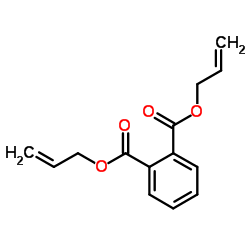A proteomics based approach to assessing the toxicity of bisphenol A and diallyl phthalate to the abalone (Haliotis diversicolor supertexta).
Jin Zhou, Zhong-Hua Cai, Lei Li, Yun-Feng Gao, Thomas H Hutchinson
Index: Chemosphere 79(5) , 595-604, (2010)
Full Text: HTML
Abstract
The contamination of marine ecosystems by endocrine disrupting compounds (EDCs) is of great concern. Protein expression profile maybe a good method to help us understand the molecular mechanisms of EDCs-toxicity to aquatic organisms. In this study, the abalone (Haliotis diversicolor supertexta), was selected as the target organism. Toxicological effects of two reference endocrine disruptors: diallyl phthalate (DAP, 50microgL(-1)) and bisphenol-A (BPA, 100microgL(-1)) were investigated after a three months static-renewal exposure on abalones using proteomics to analyze their hepatopancreas tissues. Some enzyme activity parameters of hepatopancreas extracts were also performed, including Na(+)-K(+)-ATPase, Ca(2+)-Mg(2+)-ATPase, peroxidase (POD) and malondialdehyde (MDA) production. After analyzing the proteomics profile of hepatopancreas by 2D gel electrophoresis, we found that 24 spots significantly increased or decreased at protein expression level (2-fold difference) in the 2D-maps from the treatment groups. Eighteen out of 24 protein spots were successfully identified by matrix-assisted laser desorption/ionization tandem time-of-flight mass spectrometry (MALDI-TOF-MS). These proteins can be roughly categorized into diverse functional classes such as detoxification, oxidative stress, hormone regulating, cellular metabolism and innate immunity. In addition, the enzymatic results indicated that DAP/BPA exposure affected the oxidative stress status and the cellular homeostasis, which partly corroborated the proteomics' results. Taken together, these data demonstrate that proteomics is a powerful tool to provide valuable insights into possible mechanisms of toxicity of EDCs contaminants in aquatic species. Additionally, the results highlight the potential of abalone as a valuable candidate for investigating EDCs impacts on marine ecosystems.
Related Compounds
| Structure | Name/CAS No. | Molecular Formula | Articles |
|---|---|---|---|
 |
Diallyl phthalate
CAS:131-17-9 |
C14H14O4 |
|
Determination of free and total phthalates in commercial who...
2015-12-01 [J. Dairy Sci. 98 , 8278-84, (2015)] |
|
Development of dispersive liquid-liquid microextraction comb...
2007-11-23 [J. Chromatogr. A. 1172(2) , 105-12, (2007)] |
|
[Determination of 23 phthalate esters in food by solid-phase...
2012-01-01 [Se Pu 30(1) , 27-32, (2012)] |
|
Effect of ultrasonic separation on the structure and propert...
2008-04-01 [Ultrason. Sonochem. 15(4) , 364-9, (2008)] |
|
Microstructure and rheology of stimuli-responsive microgel s...
2005-05-30 [Adv. Colloid Interface Sci. 113(2-3) , 111-20, (2005)] |